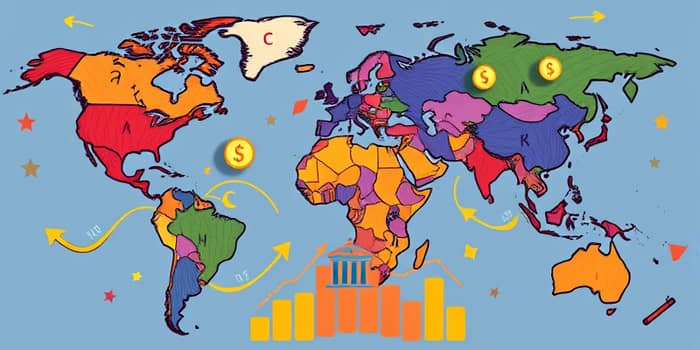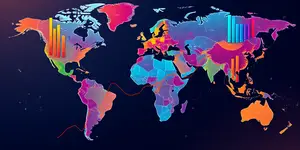
The interplay between interest rates across different economies exerts a powerful influence on currency movements. From multinational corporations to individual investors, understanding how capital flows toward higher-yielding currencies can unlock opportunities and guide strategic decisions. In this article, we explore the mechanisms, real-world implications, and practical strategies that harness the power of interest rate differentials.
An interest rate differential (IRD) measures the gap between two comparable interest-bearing instruments, often central bank rates from two countries. For example, if the British Bank rate stands at 3% while the Federal Reserve rate is 1%, the IRD equals 2%. This differential serves as a barometer of potential returns and influences how capital migrates in search of yield.
This concept forms the bedrock of modern currency markets, because every basis point separates investors’ expectations and portfolio allocations. When properly understood, IRDs become a lens through which we can interpret broader economic cycles, inflationary pressures, and monetary stances.
At its core, a higher interest rate attracts foreign capital. When investors perceive an opportunity for greater yield, they move funds into currencies offering superior returns. This dynamic often triggers currency appreciation, as demand outstrips supply.
Traders have institutionalized this process through speculative trading strategies around rate movements. Carry trades, for instance, involve borrowing in a low-rate currency and investing in one with a higher return, capturing the IRD as profit. Such practices can amplify swings, especially during periods of rapid rate changes.
Central banks drive IRDs through their policy decisions. A rate hike, typically enacted to curb inflation or cool an overheating economy, enhances a currency’s appeal. Conversely, rate cuts can trigger depreciation as yields dip.
For example, the US Federal Reserve’s aggressive move from 0.25% in early 2021 to over 5% by 2023 precipitated a notable strengthening of the US Dollar. Meanwhile, economies maintaining lower rates saw their currencies slide in value, demonstrating how historic rate hikes and currency appreciation are intrinsically linked.
Concrete data illuminate these trends. Below is a snapshot of IRDs versus the US Dollar, highlighting how different rates shape currency benchmarks:
These figures illustrate how divergent monetary paths can significantly swing currency pairs. During 2022–2023, the widening gap between US rates and those in Japan fueled pronounced USD/JPY appreciation.
Deploying these approaches requires robust analysis, as sudden policy shifts or market sentiment changes can alter outcomes rapidly. Incorporating economic calendars and central bank communications into trading algorithms enhances timing and precision.
Inflation dynamics interplay tightly with IRDs. Rising consumer prices often prompt central banks to hike rates, widening differentials. Conversely, sluggish growth and subdued inflation lead to rate cuts that compress IRDs.
Understanding the economic cycle—expansion, peak, contraction, trough—allows investors to anticipate when IRDs will expand or contract. For instance, entering a rate hike cycle early can position portfolios ahead of mainstream market moves, offering a window of opportunity.
Even a steep IRD may not guarantee currency strength if market participants question a country’s stability. During crises, safe-haven flows can drive demand for currencies like the CHF or USD, regardless of rate differentials.
The USD/EUR pair has often reflected contrasting monetary stances between the Fed and the European Central Bank. When the Fed outpaced the ECB on rate hikes, the dollar surged, marking decisive breakouts above key technical levels.
Similarly, the USD/JPY dynamic exemplifies classic carry trade behavior. With Japan’s historically low rates near zero, investors have borrowed yen to fund higher-yield assets elsewhere, pressing the yen lower and lifting the dollar.
As the global economy navigates post-pandemic recovery, inflation resurgence, and evolving central bank frameworks, IRDs will remain a cornerstone of forex dynamics. Emerging market currencies may offer fresh carry trade opportunities if their rates outpace developed peers, but they also carry heightened risk.
Investors must blend macroeconomic analysis with agile trading strategies, always balancing risk with potential return. By staying attuned to policy announcements, economic indicators, and global events, market participants can leverage IRDs to optimize portfolios and manage exposures.
Ultimately, optimizing portfolios for shifts in IRDs will define successful currency strategies in the years ahead. Mastery of these differentials equips investors to navigate volatility, capture yield, and contribute to more informed policy dialogues worldwide.
References













